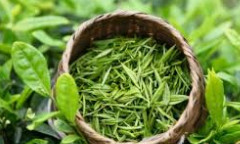Effect of Microwave Sampling on Endoplasmic Components of Tea
ABSTRACT: Objective To determine the best microwave technology parameters and drying methods for tea endoplasmic components retention. METHODS The effects of microwave drying equipment, microwave-far infrared drying and hot air drying on the endoplasmic components of summer and autumn tea were studied, and the parameters of microwave green-killing technology were optimized.
Based on the single factor test of Microwave Clearing time, leaf amount and microwave power, L9 (33) orthogonal test was carried out to determine the optimum microwave clearing process parameters by variance and range analysis.

Result When microwave was used to kill tea leaves, the amount of leaves was 50 g, the microwave power was 800 W, and the time of microwave was 150 s. Compared with three drying methods, microwave drying had the best effect on the retention of tea endoplasmic components at the overall level. ConclusionThe method of microwave drying fresh tea leaves in laboratory established in this study can provide reference for laboratory microwave solid sample method, and provide certain theoretical basis for factory microwave green killing and drying.
Key words: tea microwave drying; microwave greening; endoplasmic components
Green tea killing is a key process in green tea processing, which directly determines the quality of green tea. The principle of killing green leaves is to use high temperature to destroy the activity of enzymes in fresh leaves, prevent the oxidation of polyphenols and prevent the redness of leaves. The results showed that the contents of polyphenols and chlorophyll decreased, while the contents of caffeine and amino acids increased.
The principle of microwave green-killing is that water molecules in tea vibrate at high speed in microwave electric field, so that fresh leaves are heated wholly in microwave, which destroys the enzyme activity in fresh leaves rapidly and achieves the purpose of green-killing. It has the advantages of rapid heating, uniform heating and good quality of green-killing.
In this study, the fresh leaves of summer and autumn tea were treated by microwave technology in laboratory, and the technological parameters were optimized to maximize the retention of tea endoplasmic components and obtain the optimum technological parameters of green tea microwave sample preparation, which can provide reference basis for laboratory green tea microwave sample killing and fixing, and provide reference for factories. The preparation of tea powder with higher content by microwave blanching of fresh tea leaves provides a theoretical reference.
Drying is another important process in tea processing besides killing green leaves. The drying principle is to reduce the moisture content of tea to less than 5% by a certain processing technology. Drying not only facilitates the storage and transportation of tea, but also increases the aroma of tea, fixes the quality of tea and improves the quality of tea. In recent years, Chinese scholars have paid more and more attention to tea drying technology.
Qi Guinian et al. introduced microwave drying technology into the process of green tea processing. The results showed that the green tea processed by microwave drying could retain more active ingredients and its color was emerald green. Yuan Linying et al. compared and analyzed the effects of microwave and traditional hot air drying conditions on the quality and biochemical factors of strip green tea. The results showed that microwave sterilization could better retain the biochemical components in strip green tea.
Far infrared technology has also been used in tea drying technology in recent years. The principle is to use light waves with longer wavelength to heat objects. Deng Yuliang et al. applied the technology of constant temperature far-infrared fragrance extraction in green tea. The results showed that the technology of constant temperature far-infrared can retain chlorophyll in tea and make the finished tea green. In this study, microwave drying, microwave-far infrared drying and hot air drying methods were used to compare the retention of tea endoplasmic components, providing a reference for laboratories and factories in the selection of drying methods.